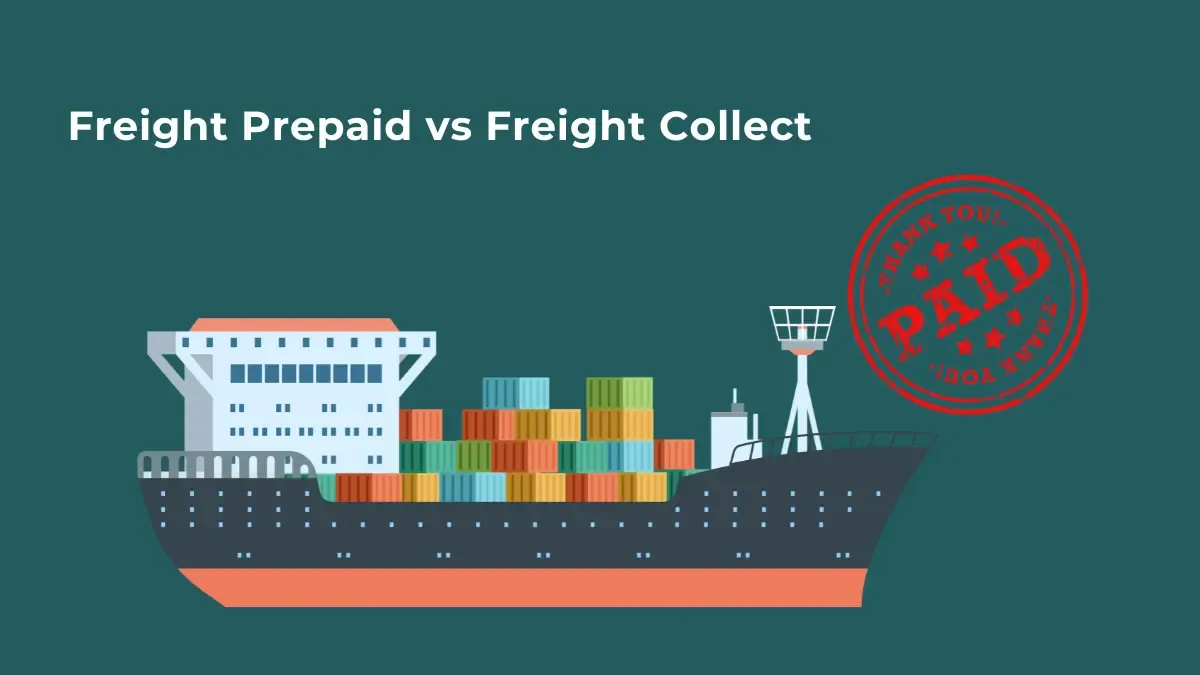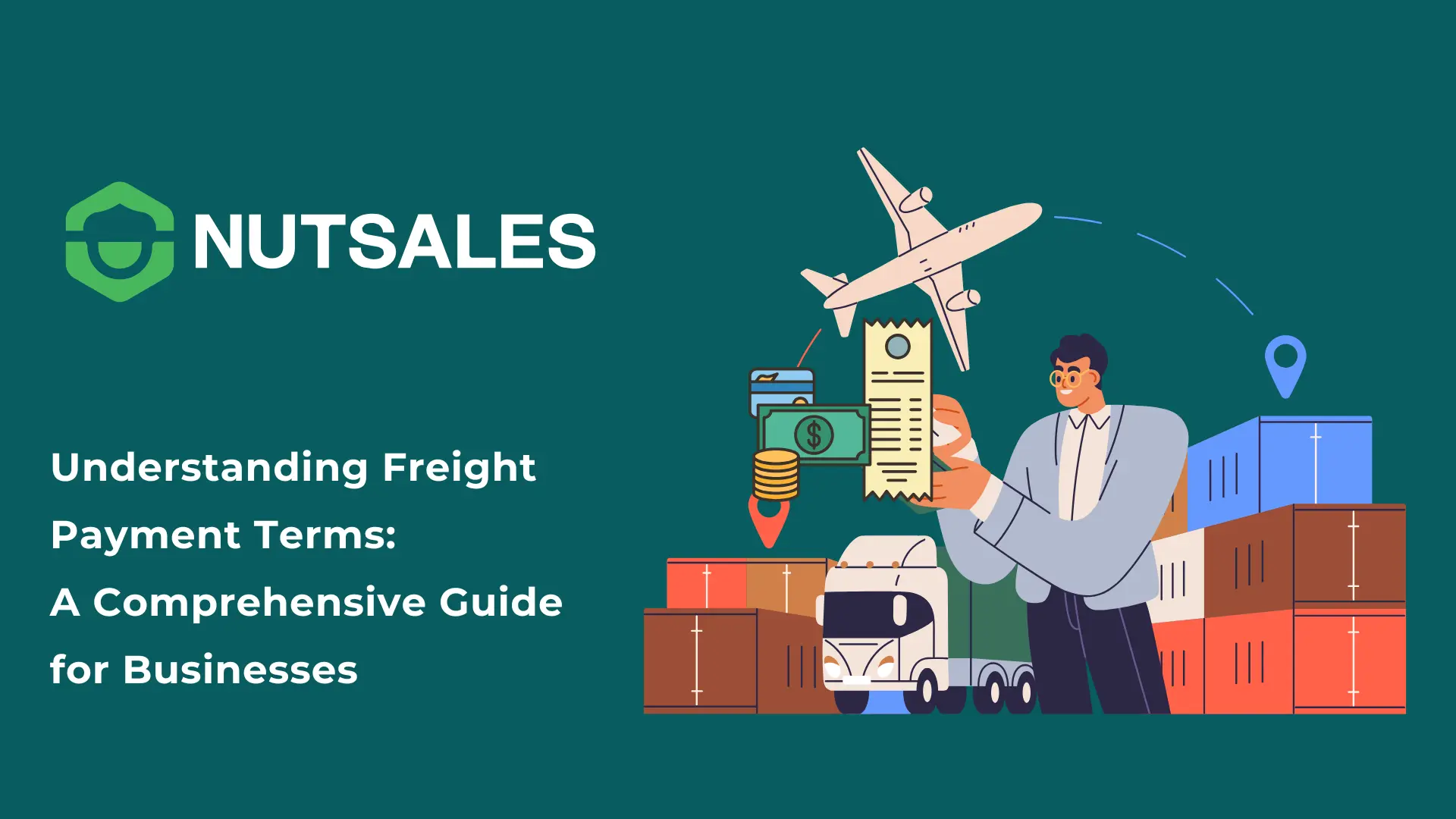Freight payment terms are the backbone of a well-run supply chain, influencing everything from cash flow to shipping efficiency. They’re not just about who pays the bill; they shape financial planning, risk management, and overall logistics strategy.
Making the right choice can streamline operations and cut costs, while the wrong one can lead to delays and unexpected expenses. In this guide, we’ll break down essential freight payment terms, compare prepaid vs. collect shipments, explore third-party billing, and explain how freight audits help keep your logistics expenses in check.
What Are Freight Payment Terms?
Freight payment terms define the agreed-upon conditions between the supplier and buyer regarding how and when payments are made for transporting goods. These terms outline responsibilities, risks, and costs, ensuring clarity in financial transactions. By clearly assigning obligations to each party, they promote transparency in invoicing and help prevent misunderstandings or disputes.
Beyond payment logistics, these terms also determine who takes responsibility for key aspects of the shipping process. This includes arranging freight insurance, handling potential damages, and covering unexpected costs or delays that may arise during transit.
The choice of freight payment terms depends on factors such as the type of goods, shipping destination, transit time, and the business relationship between the buyer and seller. A well-considered selection ensures smooth financial and logistical operations, helping businesses manage costs effectively while mitigating risks.
How Freight Payment Terms Differ from Incoterms
Freight payment terms and International Commercial Terms (Incoterms) both relate to shipping, but they serve different purposes.
Intercoms are standardized rules set by the International Chamber of Commerce (ICC) that define the logistical responsibilities of buyers and sellers in global trade. They specify who arranges transportation, insurance, and customs clearance, as well as when the risk of loss or damage transfers from the seller to the buyer.
Freight payment terms, however, are strictly financial. They determine who pays for the freight charges and how payment is handled, without affecting risk transfer or ownership of goods.
For instance, a shipment under Free on Board (FOB) Incoterms can be either freight prepaid (seller pays shipping costs) or freight collect (buyer pays shipping costs), depending on the agreed payment terms.
Likewise, Cost, Insurance, and Freight (CIF) Incoterms indicate that the seller covers shipping and insurance, but the actual payment method - whether upfront or after delivery - is determined by freight payment terms.
In short, Incoterms define who is responsible for logistics and risk, while freight payment terms clarify who pays for shipping and when.
Why Freight Payment Terms Matter in Logistics
Freight payment terms play a crucial role in financial planning and logistics operations. A well-defined agreement helps businesses:
- Control Costs and Cash Flow – Clearly outline who pays for shipping costs and when, allowing businesses to budget transportation expenses effectively.
- Minimize Financial and Legal Risks – Reduce disputes by specifying payment responsibilities, liability, and potential penalties for delays or damages.
- Streamline Operations – Eliminate confusion over payment logistics, ensuring smoother coordination between shippers, consignees, and logistics providers.
- Enhance Business Relationships – Promote transparency and trust by setting clear expectations for all parties involved in the shipment process.
By structuring freight payment terms correctly, businesses can avoid unexpected costs, improve efficiency, and strengthen partnerships. Next, we’ll explore common payment structures, including freight prepaid, freight collect, and third-party freight payment.
Common Freight Payment Terms: Prepaid, Collect, and Third-Party

The three most widely used terms - freight prepaid, freight collect, and third-party freight payment - each serves different business needs and impacts cash flow and liability differently. Understanding the differences can help businesses choose the right option for their shipping needs.
1. Freight Prepaid
Freight prepaid means the shipper (seller) pays the freight charges upfront before the goods are shipped. This is commonly used in FOB Origin shipments, where the seller takes responsibility for transportation costs until the goods leave their premises.
Advantages of Freight Prepaid
One of the biggest benefits of freight prepaid is that it simplifies financial transactions for the consignee, as they do not have to worry about making a payment upon delivery. It also ensures that shipments are not delayed due to payment disputes and reduces the risk of freight charges being unpaid.
Additionally, because the shipper pays the carrier directly, they can negotiate better rates, particularly if they have high shipping volumes or established relationships with carriers. Prepaid freight also eliminates disputes over freight costs at the destination, leading to a smoother shipping experience.
Disadvantages of Freight Prepaid
The main downside is the financial burden on the seller. Since they must cover shipping costs upfront, it can impact cash flow, especially for businesses shipping large quantities. Another challenge is that prepaid freight puts full liability on the shipper to ensure payment is made correctly, and in cases of damaged or lost shipments, disputes over responsibility may arise.
Common Use Cases for Freight Prepaid
Freight prepaid is often used by businesses that want to enhance customer experience by including shipping costs within the purchase price.
It is also common in eCommerce, where companies advertise “free shipping” but account for the freight costs in product pricing. Additionally, companies with strong relationships with carriers may choose prepaid freight to leverage better shipping rates and simplify their logistics processes.
2. Freight Collect
Freight collect shifts the responsibility of freight payment to the consignee (buyer), meaning they must pay for the transportation costs upon receiving the goods. This method is commonly used in FOB Destination shipments, where the consignee assumes responsibility for the shipment upon arrival.
Advantages of Freight Collect
A key advantage of freight collect is that it provides greater cash flow flexibility for the shipper, as they do not have to pay for transportation upfront. Instead, the consignee bears the shipping cost, allowing the seller to allocate funds elsewhere.
This method is also beneficial for the consignee, as it gives them control over carrier selection, freight negotiations, and payment timing. Buyers who have existing relationships with specific freight carriers often prefer collect freight as they can use their negotiated shipping rates to minimize costs.
Disadvantages of Freight Collect
One of the main risks of freight collect is that payment delays can cause shipment hold-ups, potentially leading to demurrage or additional storage fees. Additionally, if the consignee refuses to pay the freight charge, the shipment may be stuck in transit, creating logistical complications. Disputes over costs can also arise if freight rates are not agreed upon in advance.
Common Use Cases for Freight Collect
Freight collect is frequently used in business-to-business (B2B) transactions where large corporations have established freight agreements with carriers.
It is also a preferred option for international trade when buyers want to manage their own shipping and logistics to optimize costs. Businesses that require goods inspection upon arrival before making payments often opt for this method to ensure quality control.
3. Third-Party Freight Payment

With third-party freight payment, neither the shipper nor the consignee pays the carrier directly. Instead, a third-party logistics provider (3PL) manages the entire freight payment and transportation process on behalf of both parties. This method is widely used by companies that outsource logistics operations for efficiency and cost optimization.
Advantages of Third-Party Freight Payment
One of the key benefits of using a third-party logistics provider is that it reduces the administrative burden on businesses. Companies no longer need to handle freight invoices, payment processing, or carrier negotiations, as the 3PL takes care of everything.
This ensures timely freight payments and prevents disruptions due to missed payments. Additionally, 3PLs often negotiate bulk shipping rates, leading to cost savings for businesses that ship large volumes of goods.
Another advantage is increased visibility and tracking, as many third-party providers offer logistics management systems to monitor shipments in real time.
Disadvantages of Third-Party Freight Payment
While outsourcing freight payment can be convenient, businesses must ensure they choose a reliable 3PL provider. Lack of transparency in billing and potential mismanagement of funds are risks companies need to be aware of.
Additionally, using a third-party provider means businesses lose direct control over payment processes, which may not be ideal for companies that prefer hands-on management of their logistics.
Common Use Cases for Third-Party Freight Payment
Third-party freight payment is commonly used by businesses with high shipping volumes, global supply chains, or complex logistics needs. Companies that want to reduce internal logistics workloads and optimize freight management often benefit from this model. It is also widely adopted in industries where supply chain efficiency is critical, such as retail, manufacturing, and healthcare.
Each freight payment term has its own set of benefits and drawbacks, so businesses must evaluate their supply chain needs, cash flow considerations, and logistics strategy before making a decision.
Read More: Most Used Jargon: Logistics Terminology
The Role of Freight Audit and Payment in Cost Control
Freight audit and payment processes are essential for businesses aiming to keep transportation expenses in check, regardless of whether they use freight prepaid, freight collect, or third-party freight payment arrangements. By thoroughly reviewing invoices and ensuring all fees align with contracted rates, companies can detect billing errors, reduce unnecessary expenditures, and maintain better control over their cash flow.
A freight audit typically involves verifying that each charge - such as fuel surcharges, accessorial fees, and per-mile or per-weight costs - matches the agreed-upon terms. In freight prepaid scenarios, where the shipper bears initial responsibility for payment, timely audits help sellers confirm they’re being charged accurately and recoup any overpayments before they impact profit margins.
Conversely, in freight collect arrangements, the consignee needs to validate invoice details to avoid unexpected or inflated costs upon delivery. Meanwhile, companies that rely on third-party freight payment providers often leverage these audits to assess their 3PL’s invoicing integrity and ensure negotiated bulk rates are honored.
By combining consistent auditing practices with the right payment terms, businesses gain a comprehensive view of their shipping expenses. This visibility enables proactive negotiation with carriers, fosters transparent collaboration between shippers and consignees, and helps identify cost-saving opportunities in routing or freight consolidation.
Moreover, timely freight payment - once invoices pass the audit - maintains healthy relationships with carriers, reduces service interruptions, and can secure more favorable shipping rates in the long run.
For companies managing complex logistics operations, automation is key. Nutsales streamlines the freight audit and payment process, ensuring accurate cost tracking, seamless invoice verification, and better financial oversight. By leveraging technology, businesses can eliminate manual errors, improve efficiency, and make data-driven decisions that optimize freight spending.
That’s absolutely worth a try! Install our app now to experience it!
Wrapping Up
Understanding freight payment terms is crucial for businesses involved in shipping and logistics. By knowing the difference between freight prepaid vs collect, leveraging 3rd party shipping, and implementing freight audit and payment processes, companies can optimize their freight costs and improve operational efficiency.
To succeed in logistics and supply chain management, businesses must stay informed about freight payment structures and proactively implement strategies to manage costs effectively. Whether you're a small business or a large corporation, mastering these terms will give you a competitive edge in global trade and transportation.
Read More: What is Logistics and Why is It Important?
FAQs on Freight Payment Terms
1. What is the difference between Freight Prepaid vs Collect?

Freight prepaid means the seller pays for shipping upfront, ensuring control over the process and a smoother transaction for the buyer. Freight collect, on the other hand, requires the buyer to pay upon delivery, giving them control over carrier selection and logistics costs.
2. How does 3rd party shipping impact freight payment?
In third-party shipping, a logistics provider (3PL) assumes responsibility for handling and paying freight charges, making the shipping process more efficient and often more cost-effective. Businesses benefit from bulk shipping discounts, reduced administrative burdens, and improved freight management, as the 3PL provider streamlines invoicing and payment processes.
3. How can businesses reduce freight costs through payment terms?
Businesses can optimize freight costs by choosing the right payment terms based on their operational model. Negotiating favorable rates with carriers, leveraging third-party freight payment providers for cost savings, and implementing a thorough freight audit process can significantly reduce expenses. Additionally, companies can explore consolidation options and optimize shipment routes for cost efficiency.
4. What are the risks of using third-party freight payment services?
While third-party freight payment services streamline logistics, businesses must ensure they choose a reliable provider. Risks include billing inaccuracies, lack of transparency in pricing, and potential delays in payments that could affect shipping timelines. Conducting due diligence and partnering with reputable 3PL providers can mitigate these risks.
5. When should a business consider switching freight payment terms?
A business should reassess its freight payment terms when:
- Shipping volumes increase and require a more structured logistics approach.
- Cash flow management becomes a challenge due to high upfront freight costs.
- Carrier relationships need improvement through better negotiation leverage.
- Errors and discrepancies in freight invoices cause financial losses.
